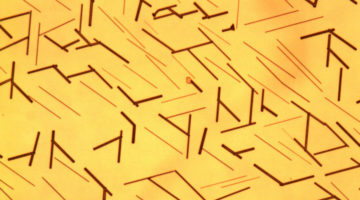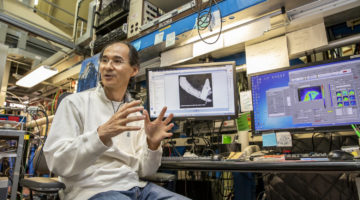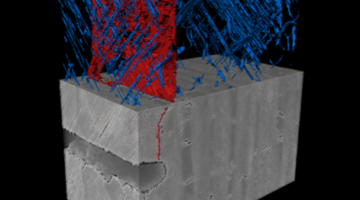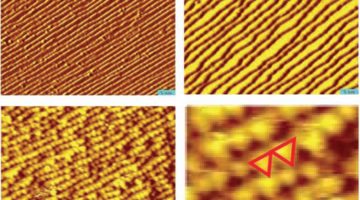A new ferroelectric material—grown in the lab from cesium germanium tribromide (CGB)—opens the door to an easier approach to making solar cell devices. Unlike conventional solar materials, CGB crystals are inherently polarized, where one side of the crystal builds up positive charges and the other side builds up negative charges, no doping required. Read more »
Mineral Discovery Made Easier: X-Ray Technique Shines a New Light on Tiny, Rare Crystals
Like a tiny needle in a sprawling hayfield, a single crystal grain measuring just tens of millionths of a meter— found in a borehole sample drilled in Central Siberia—had an unexpected chemical makeup. And a specialized x-ray technique in use at the ALS confirmed the sample’s uniqueness and paved the way for its formal recognition as a newly discovered mineral: ognitite. Read more »
3D Localization of Nanoscale Battery Reactions
A new tool lets researchers pinpoint the locations of chemical reactions happening inside batteries in three dimensions at the nanoscale level. Combining ptychography, tomography, and spectroscopy, Nanosurveyor 1 is a multidimensional tool providing novel insight into the design of next-generation batteries and devices. Read more »
GE Aviation Delves into Advanced Materials at the ALS
Developing ceramic matrix composites (CMCs) to replace the metal alloys traditionally used in jet engines has been a goal for the aviation industry for decades. For more than a year, GE Aviation has used the tomography capabilities at ALS Beamline 8.3.2 to gain insight into their CMC materials, guiding their engineering and design efforts. Read more »![]()
Record-Setting Microscopy Illuminates Energy Storage Materials
Using soft x-ray ptychography, researchers at the ALS have demonstrated the highest-resolution x-ray microscopy ever achieved by imaging five-nanometer structures. The researchers used ptychographic imaging to map the chemical composition of lithium iron phosphate nanocrystals, yielding important new insights into a material of high interest for electrochemical energy storage. Read more »![]()
![]()
Platinum Nanoclusters Out-Perform Single Crystals
Researchers have found that under high pressure—comparable to the pressures at which many industrial technologies operate—platinum surfaces can change their structure dramatically in response to the presence of high-coverage reactants. Read more »![]()
![]()





